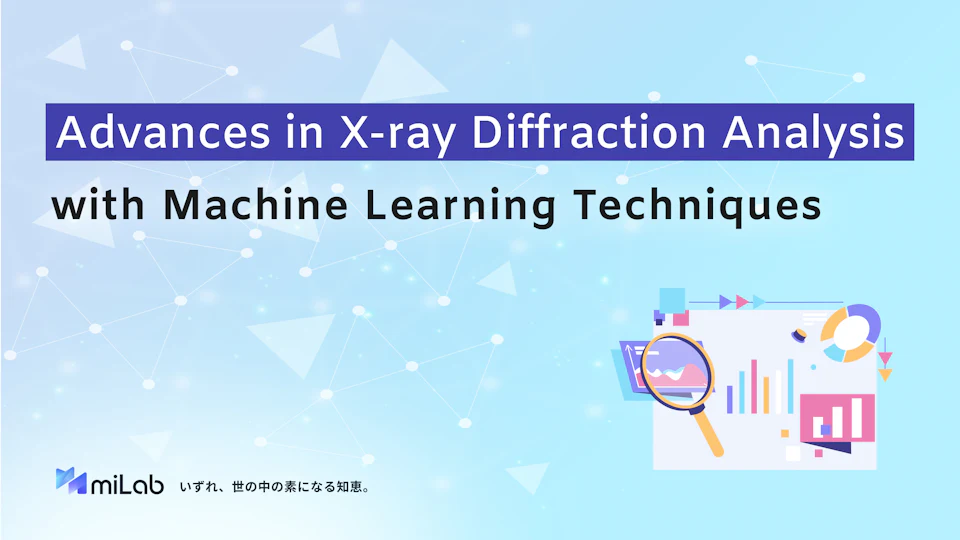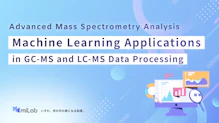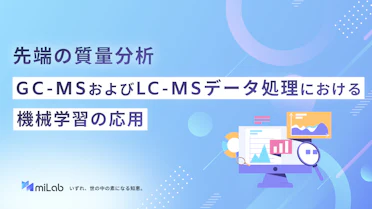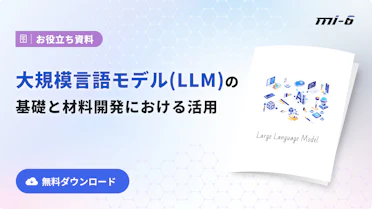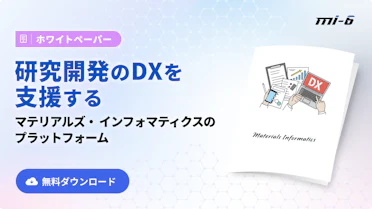Introduction of XRD Analysis
X-ray diffraction (XRD) stands as a fundamental and critical analytical technique in materials science, enabling the characterization of crystal structures and phase identification in diverse materials such as metals, ceramics, and semiconductors. The method reveals detailed atomic or molecular arrangements by analyzing diffraction patterns arising from the crystalline structure of materials.
Traditional XRD analytical methods rely on relatively straightforward principles: acquiring diffraction patterns, then identifying structural information based on peak positions and intensities. However, contemporary advancements in materials science—such as the development of novel materials, complex multi-phase materials, nanostructured materials, and high-entropy alloys (HEAs)—have made accurate and efficient structural identification increasingly challenging.
To address these emerging challenges, XRD analysis techniques have evolved significantly. Recently, particular attention has turned toward introducing advanced analytical methods employing machine learning (ML) and artificial intelligence (AI). These new techniques promise rapid and accurate analysis of complex diffraction patterns that have traditionally been difficult or overly time-consuming to interpret.
With the integration of machine learning, XRD analysis has expanded its scope from simple peak identification to the rapid processing of large datasets and the extraction of hidden correlations. Furthermore, ML approaches show promise in robustly addressing experimental issues such as noise, strain effects, and preferred orientation—common imperfections encountered in real-world measurement conditions.
In this article, acknowledging this evolving landscape, we first clarify the limitations of traditional XRD methods. We then explore representative machine learning approaches that have recently emerged, comparing and evaluating their impact on modern XRD analysis.
Traditional Analysis for XRD spectra and its Challenges
Traditional Methods
Historically, two main methods have dominated traditional XRD analysis: (1) Search/Match library methods and (2)Rietveld refinement. While each method offers distinct advantages, recent advancements in materials science have brought forth new challenges that exceed the capabilities of these traditional approaches.
(1) Search/Match Library Method
This technique enables the rapid and efficient identification of known crystalline phases by comparing measured diffraction patterns against existing databases. It is particularly effective when peak overlap is minimal and the target phases are already registered within the database, thereby serving as a useful preliminary screening tool that enhances the overall efficiency of phase analysis. However, when dealing with novel compounds or complex multiphase mixtures, the accuracy of identification tends to decline, posing a significant limitation.
(2) Conventional Rietveld Refinement
This method quantifies the phase fractions of crystalline components often identified through the search/match library method by performing iterative calculations based on physical models. It refines structural parameters such as lattice constants, atomic positions, and site occupancies to achieve the best fit to the experimental data. Rietveld refinement provides highly reliable results for single-phase or moderately complex samples. However, as the complexity of the data increases, the computational load rises significantly, often leading to extended analysis times.
Key Challenges Faced by Traditional Approaches
The evolution of materials science and the increasing complexity of industrial applications have introduced several challenges that exceed the capabilities of traditional XRD analysis methods. These challenges arise due to the growing demand for high-throughput analysis, real-time data processing, and the characterization of increasingly complex materials.
1. Peak Complexity and Multi-Phase Analysis
- Traditional Rietveld refinement relies on precise peak fitting, which becomes increasingly difficult when dealing with materials exhibiting overlapping diffraction peaks from multiple phases.
- Search/Match Libraries struggle when unknown or novel phases emerge, particularly in high-entropy alloys and advanced ceramics with intricate diffraction patterns.
- Ambiguous peak assignments represent a significant limitation, reducing the reliability of phase identification and structural refinement.
2. Data Volume and Processing Demands
- High-throughput XRD instruments generate vast datasets—thousands of diffraction patterns per experiment—outpacing the manual and iterative nature of traditional Rietveld refinement.
- Search/Match Libraries require extensive manual validation when dealing with large datasets, leading to bottlenecks in automated workflows.
- Conventional processing speeds cannot meet the demands of real-time screening and rapid decision-making, limiting their applicability to fast-paced industrial and research environments.
3. Experimental Artifacts and Real-World Conditions
- Traditional Rietveld refinement assumes ideal diffraction conditions, making it vulnerable to real-world imperfections such as strain effects, preferred orientation, and background noise
- Search/Match Library methods are prone to errors when dealing with partially crystalline or nanocrystalline materials, where peak broadening distorts database matching.
The Current XRD Analysis using Machine Learning
To overcome the limitations inherent in traditional XRD analysis, modern analytical approaches increasingly incorporate machine learning (ML). Rather than viewing diffraction patterns merely as collections of peaks, ML methods transform these complex patterns into meaningful representations that simultaneously capture both local and global crystallographic information. Consequently, machine learning methods have become capable of addressing previously challenging issues, such as peak complexity in multi-phase samples, processing massive datasets, and handling experimental artifacts and noise.
In this chapter, we describe representative ML approaches in detail, outlining their fundamental concepts, unique advantages, and suitable applications.
Convolutional Neural Networks (CNN)
CNN processes full-profile XRD patterns as one-dimensional signals by applying multiple convolutional filters that slide across the patterns. This approach extracts local features—such as peak positions, shapes, and intensities—without flattening the data completely through fully connected layers. By leveraging techniques like max pooling and dropout, CNNs can effectively deconvolute overlapping peaks and are robust against noise and slight peak shifts. They excel in high-throughput classification tasks, making them well suited for identifying crystal symmetries in multi-phase samples. The strength of the CNN lies in its speed and efficiency, provided that a sufficiently large and diverse training dataset is available.
Transformer Encoder (T-encoder)
The transformer encoder adapts the self-attention mechanism—originally developed for natural language processing—to the domain of XRD analysis. In this approach, an XRD pattern is segmented into patches, and the encoder learns long-range dependencies by computing attention scores between these patches. This enables the model to capture global context and correlations among distant features, such as relationships between peaks that are far apart in 2θ space. While T-encoders provide a comprehensive representation of the diffraction pattern, they generally require larger datasets and careful hyperparameter tuning. They are especially useful when global structural context is critical, even though their interpretability may be lower compared to more localized methods.

Fig.1 Machine Learning Architectures for XRD Spectra Analysis: Convolutional Neural Network (CNN), Transformer Encoder (T-encoder). Created by the author.
CNN–MLP for Property Regression
For predicting material properties (e.g., bandgap, formation energy, stability) from XRD data, the CNN–MLP architecture combines the feature-extraction power of an CNN with the regression capabilities of a multilayer perceptron (MLP). In this hybrid model, the CNN extracts structural features directly from the full-profile XRD patterns, whereas the MLP incorporates additional inputs, such as composition vectors. By combining these features, the model identifies correlations between the microstructural signatures captured from the diffraction patterns and the macroscopic properties of materials. This approach is particularly effective for property regression tasks where both structural and compositional information are critical.

Fig.2 Machine Learning Architectures for XRD Spectra Analysis: CNN with Multi-Layer Perceptron (CNN-MLP). Created by the author.
Variational Autoencoder (VAE)
A variational autoencoder (VAE) is an unsupervised learning technique that compresses high-dimensional XRD patterns into a low-dimensional latent space and then reconstructs the original input from this compact representation. The VAE framework is designed to learn the underlying probability distribution of the data, thereby capturing latent structural features that may not be evident from the raw diffraction patterns alone. This latent space can be used for clustering, visualization, and even anomaly detection. In the context of XRD analysis, a well-trained VAE can reveal hidden similarities among materials and help in identifying distinct phase regions or trends across a large dataset.

Fig.3 Machine Learning Architectures for XRD Spectra Analysis: Variational Autoencoder (VAE). Created by the author.
Comparative Analysis
When implementing machine-learning-based XRD analysis, selecting the most suitable method for a given scenario is essential. In this chapter, we comparatively analyze traditional and modern machine-learning-based methods according to four criteria: processing speed, multi-phase capability, interpretability, and scalability. Additionally, we provide highlights of each method, offering practical guidelines for their selection.
Criteria for Comparative Evaluation
The following criteria have been established considering current demands in materials analysis and industry applications:
- Time: how quickly each method can handle large or streaming datasets.
- Multi-Phase: capability for analyzing overlapping or multi-phase peaks.
- Interpretation: clarity in terms of physics-based parameters versus “black-box” or minimal mechanistic detail.
- Scalability: whether the approach can handle high-throughput data efficiently.
The table below summarizes the comparative analysis of traditional and machine-learning-based methods according to these criteria.
Method | Technique | Time | Multi‑Phase Handling | Interpretation | Scalability | Highlight |
|---|---|---|---|---|---|---|
Traditional | Traditional Rietveld | Slow | Low | Structural insights | Low | Highly reliable for detailed crystallographic analysis when time permits. |
Search/Match Libraries | Moderate | Low | Low interpretability | Moderate | Fast phase identification for well-documented materials; limited for novel or complex systems. | |
Machine learning | CNN / Deep Learning | Fast | High | Black-box | High | Excels at deconvoluting overlapping peaks and handling noise—ideal for high-throughput screening. |
T-encoder | Moderate | Moderate | Black-box | Moderate | Captures global contextual relationships via self-attention but demands large training sets. | |
CNN–MLP | Fast | High | Black-box | High | Integrates XRD features with compositional data for accurate property regression and classification. | |
Variational Autoencoder (VAE) | Moderate | Moderate | Moderate | High | Provides dimensionality reduction and clustering to explore latent structural trends and novel phases. |
Guidelines for Method Selection
- For Fast Analysis and High-Throughput Data Processing
CNN is the optimal choice, particularly suited for rapid classification and multi-phase analyses requiring swift decision-making. - For Identification of Unknown or Complex Phases
CNN and Transformer Encoder are recommended. Transformer Encoders particularly excel in capturing long-range correlations between diffraction peaks, offering significant advantages in analyzing complex and novel materials. - For Predicting Material Properties from Structural Data
The CNN–MLP hybrid model is most suitable, effectively establishing correlations between microscopic structural information and macroscopic properties (e.g., bandgap, formation energy, stability). - For Unsupervised Exploration, Clustering, and Anomaly Detection
The Variational Autoencoder (VAE) offers substantial advantages by revealing hidden relationships and patterns not readily observable with traditional analysis. - For Precise Structural Determination of Relatively Simple, Single-phase Samples
Rietveld refinement remains the most reliable approach, though it is less suited to multi-phase systems and rapid processing.
Conclusions
The landscape of XRD analysis continues to evolve, driven by the increasing complexity of materials and the growing demand for faster and more accurate characterization. While traditional methods maintain their importance in detailed structural analysis, machine learning approaches are significantly enhancing high-throughput applications and complex phase identification. The future likely lies in hybrid systems that effectively combine crystallographic expertise with computational efficiency.
Modern XRD workflows benefit from a complementary approach that leverages the proven reliability of traditional methods and incorporates ML-driven solutions for complex or previously intractable scenarios. This integration enables:
- Rapid analysis of large-scale datasets
- Robust handling of complex, multi-phase systems
- Adaptive experimental strategies
- Enhanced detection of novel phases
As these technologies mature, we anticipate further improvements in accuracy, speed, and accessibility, making sophisticated XRD analysis increasingly accessible for both research and industrial applications.
References
- Davel, C., Bassiri‑Gharb, N., & Correa‑Baena, J.-P. (2024). Machine Learning in X‑ray Scattering for Materials Discovery and Characterization [Preprint]. ChemRxiv.
- Zheng, K., He, Z., Che, L., Cheng, H., Ge, M., Si, T., & Xu, X. (2024). Deep alloys: Metal materials empowered by deep learning. Materials Science in Semiconductor Processing, 179, 108514.
- Zhao, X., Luo, Y., Liu, J., Liu, W., Rosso, K. M., Guo, X., Geng, T., Li, A., & Zhang, X. (2023). Machine learning automated analysis of enormous synchrotron X‑ray diffraction datasets. The Journal of Physical Chemistry C, 127(??), 14830–14838.
- Szymanski, N. J., Bartel, C. J., Zeng, Y., Diallo, M., Kim, H., & Ceder, G. (2023). Adaptively driven X‑ray diffraction guided by machine learning for autonomous phase identification. npj Computational Materials, 9, Article 31.
- Lee, B. D., Lee, J.-W., Ahn, J., Kim, S., Park, W. B., & Sohn, K.-S. (2023). A deep learning approach to powder X‑ray diffraction pattern analysis: Addressing generalizability and perturbation issues simultaneously. Advanced Intelligent Systems.
- Lee, B. D., Lee, J.-W., Park, W. B., Park, J., Cho, M.-Y., Singh, S. P., Pyo, M., & Sohn, K.-S. (2022). Powder X‑ray diffraction pattern is all you need for machine‑learning‑based symmetry identification and property prediction. Advanced Intelligent Systems, 4, Article 2200042.

